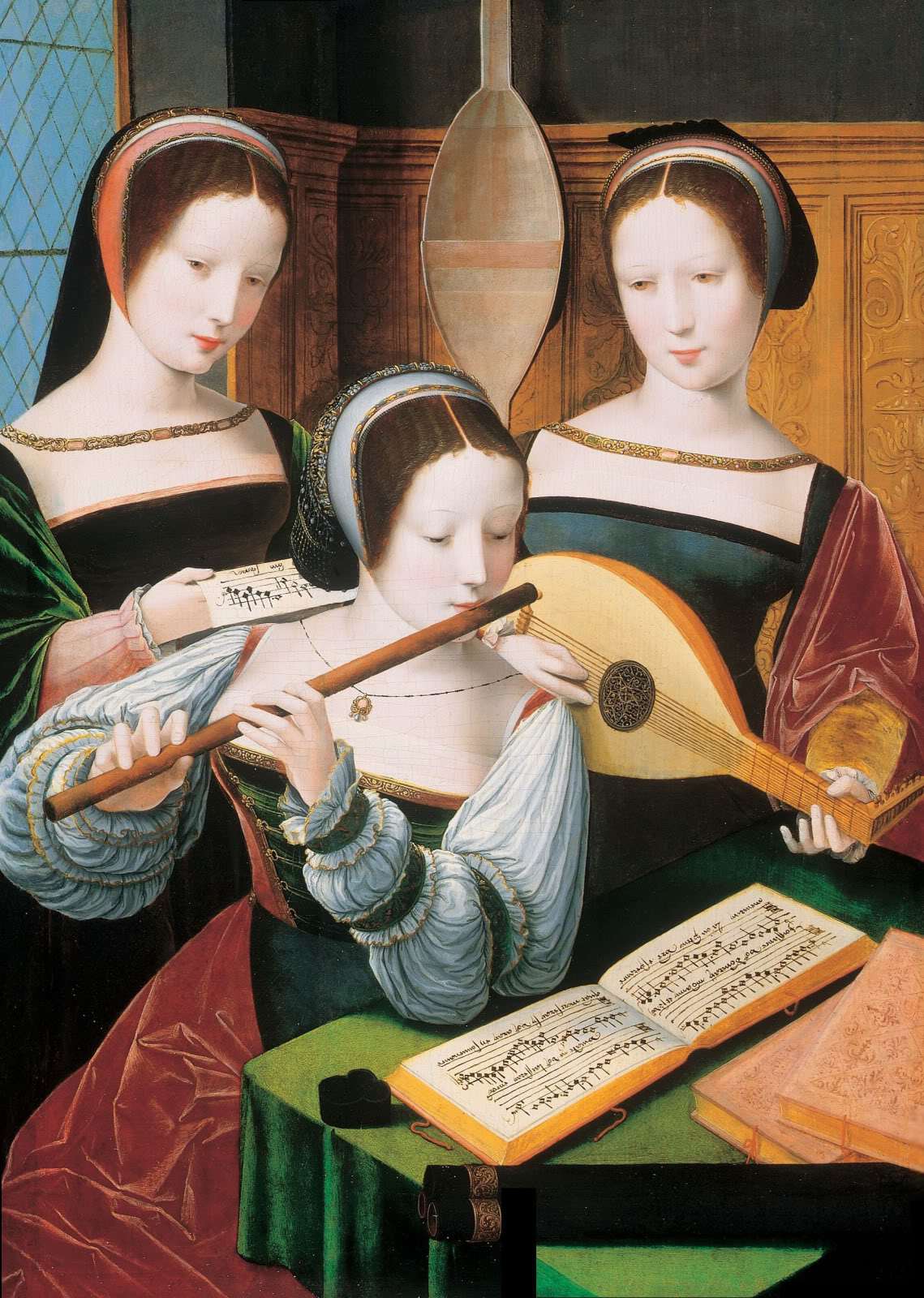|
Back
Women's lives in music Toronto
The Trinity-St. Paul's Centre
05/24/2013 - & May 25, 26, 2013
Hildegarde of Bingen: Hodie aperuit – Ave generosa
Comtessa de Dia: A chanter m'er de so
Madalena Casulana: Ridon or per le piagge – Amor per quel cagion – Io d’odorate fronde
Barbara Strozzi: L’eraclito amoroso
Francesca Caccini: selections from La liberazione di Ruggiero
Guillaume de Machaut: Qui pourroit meilleur choisir – Douce dame jolie
John Bennett: All creatures now
Anthony Holborne: Galliard 40 – Galliard "the New Yeere’s Gift"
Claude de Sermisy: Jouissance vous donneray
Thoinot Arbeau: Basse dance: Jouissance vous donneray
Luzzasco Luzzaschi: T’amo mia vita
Michael Praetorius: Les Gavottes
Anonymous: seven items
Paul Jenkins (tenor, harp, harpsichord), Alison Melville (recorder, flute), Daniel Swenberg (lute, theorbo, guitar), John Pepper (bass), Michele DeBoer (soprano), Vicki St. Pierre (mezzo-soprano), Maggie Huculak, Karen Woolridge (narrators)
The Toronto Consort: David Fallis (artistic director, tenor, percussion), Ben Grossman (hurdy-gurdy, percussion), Katherine Hill (soprano, vielle)
Alison Mackay(concept and script), Raha Javanfar (projections and lighting design)

This varied program, titled A Woman’s Life, focused on female composers and performers of the late middle ages and renaissance. It was devised by Alison Mackay whose two successful scripted programs accompanied by images for the Tafelmusik Baroque Orchestra are The Galileo Project and House of Dreams.
The program interwove 25 musical numbers with readings from and about notable women of the period in England, France, Germany, Italy, and Spain. One writer is Chrstine de Pizan (1364-c. 1430) whose Livre de la cité des femmes wass quoted; she also wrote the words to two of the songs, Guillame de Machaut’s Qui pourroit meilleur choisir, a song praising a chivalrous, wise and handsome man, and Or est venu le tres gracieux moys, a song welcoming the month of May.
The protean Hildegard of Bingen (1098-1179) would have to be included in such a program; not only is she the earliest female composer we can trace, she is also the earliest composer to whom works can be definitively ascribed. From the same century is the female troubador (or trobaritz) Beatriz (Comtessa) de Dia whose A chantar m’er de so (words in provençal) expresses a woman’s desire for a haughty man.
Some of the anonymous pieces on the program are from liturgical collections of works sung by cloistered women. Others are secular, such as Je vous prie, dame, Marie, in which two women debate the best way to deal with expressing one’s love for a man who seems reticent - to be bold or subtle? (A question still unanswered.)
The program featured three songs by Madalena Casulana; her dates are unknown but she became the first woman to have compositions published in a collection of madrigals in Venice in 1566.
Consort members, with their decades of experience performing this music, have come into a seemingly spontaneous, easy-going style of delivery with an infectious fun quotient. Virtuosic set pieces are rare, but there was one in this program: Barbara Strozzi’s L’eraclito amoroso, a lament for a dead lover, given a deeply dramatic performance by Vicki St. Pierre with lute accompaniment. Strozzi (1619-1664?) was a prolific Venetian composer and student of Francesco Cavalli. This magnificent lament shows his influence and, of course, that of Monteverdi, arguably the precursor of the whole vibrant musical age.
No fewer than 22 women composers had works published in Italy in the 1600s. Another was the Florentine Francesca Caccini (1587-1640), daughter of composer Giulio Caccini. Her La liberazione di Ruggiero of 1625 is the earliest known opera composed by a woman. One of the three excerpts we heard was the Coro delle piante incantate, or “Chorus of the enchanted trees”; who can resist an opera featuring singing trees?
The picture reproduced above from Antwerp c. 1525 shows three women performing a song which can be made out from the painting as Jouissance vous donneray by Claude de Sermisy (1490-1562) which the consort performed with the same forces as illustrated.
Other works, whether anonymous or composed by men, illustrated various aspects of women’s lives. Along with the rich array of projected images and the narrations by actresses Maggie Huculak and Karen Woolridge, the evening gave a fascinating overview of an age and theme that could well be explored in greater depth.
Much of the musical content of this program was performed some years ago by the Toronto Consort and was released on a CD, Full Well She Sang, re-released this year on the Marquis label. It is a great way to end the group’s 40th season.
Michael Johnson
|